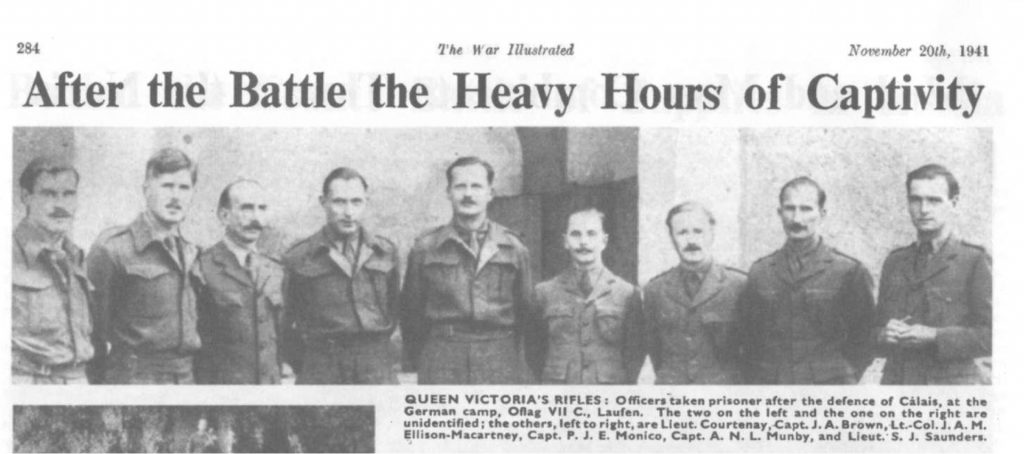
Lt Col John Arthur Mowbray Ellison-Macartney TD was born on 12 March 1903, the son of the Rt Hon Sir William Grey Ellison-Macartney KCMG and Lady Ellison-Macartney. His father was the Governor of Tasmania 1913 – 1917 and Western Australia 1917 – 1920. Sir William was sometime District Grand Master of Western Australia having been initiated into the Apollo whilst up at Exeter. His father also joined Cappagh Lodge No 350 and Concord Lodge No 332 and was a Founder of Border Lodge No 482.
He was educated in Tasmania and Eton, his father’s alma mater and later went on to Queen Mary College, University of London. He would return to Queen Mary as Bursar in the 1930s.
He was known to his friends as ‘Plushy’.
He joined the Regiment in 1923. He was promoted Lieutenant in 1925 and Captain in 1929 before being attached to the University of London Contingent (Infantry Unit) Senior Division in 1934. He was promoted Major in 1936 and Lieutenant Colonel in 1939.
He was initiated in 1938 and was passed and raised but never took office. He was of course a Lewis but seems not to have been connected to any of his father’s lodges.
He commanded the 1st Battalion from 1939-1940, taking them to Calais for the infamous and and ultimately futile defence that was a significant factor in allowing the evacuation of Dunkirk, for which he was Mentioned. The Regiment’s strength was seriously depleted when the War Office shamefully requisitioned its 22 scout-cars and motorcycles which would have allowed the Regiment to fulfill its motorised reconnaissance role for which it was trained and prepared for, on the eve of embarkation, a shortcoming further compounded by another order to sail without any transport at all.
In his own words:
‘The Battalion left for Calais, shorn of its mobility and customary means of communication. It fought in a role divorced from its training and practice: it dived straight into battle. And in common with the regular Battalions the 60th Rifles and the Rifle Brigade, found itself fighting against impossible odds: one of the more memorable stories to circulate POW camps after the fall of France was that concerning a French coastal gun hastily brought into action by the men of the Q.V.R. – the barrel fell off when it was fired for the first time in anger at an advancing German tank, causing a ‘roar of laughter from the Q.V.R. that rose along the northern rampart’.
He survived despite being wounded and spent the rest of the war as a PoW with much of the remainder of his Battalion. He was held at Oflag 12B-Hadamar Germany, before gaining his freedom on the arrival of advanced elements of the 2nd US Infantry Division. Hadamar’s nearby Psychiatric Hospital had been used as part of the Nazi regime’s euthanasia programme. He considered internment akin to being back at boarding school.
The War Illustrated of 20 November 1941 carried a photograph of some of the interned officers and is reproduced below. It shows Ellison-Macartney in the middle, with Maj John ‘Buster’ Brown and others.
After the war he was chairman of St John’s Hospital for Diseases of the Skin from 1947. He was given the TD in 1951 and made a CBE for this work in 1965.
He passed away in October 1985.
